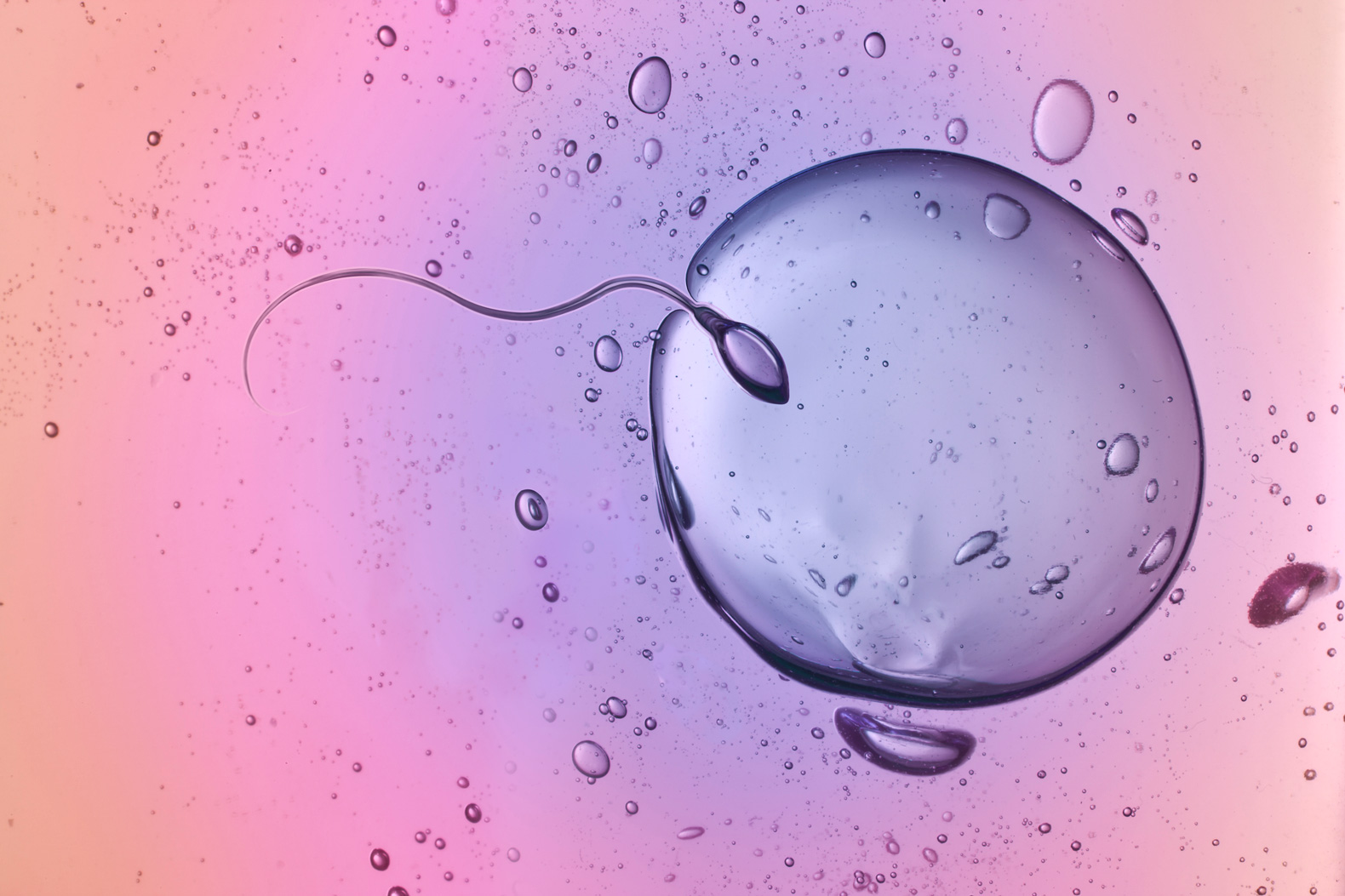Fertilisation is the process by which two gametes, an egg and a sperm, come together to generate the so-called zygote, as the embryo is called when it is formed.
This process, which explains how does the sperm reach the egg, is often described as a race among the sperm towards the egg, although it is a much more complex process, and it is more accurate to say that it is a synergy between the male and female gamete, with a number of processes and reactions that have to take place in sync in order to generate an embryo that can develop and result in a pregnancy.
How does the sperm reach the egg?
Once ejaculated, the sperm has to pass through the female reproductive tract – vagina, cervix and uterus – to reach the fallopian tubes. This journey has numerous obstacles: vaginal pH, cervical mucus, the small size of the uterus-tube connection, and the response of the immune system. The pH of the vaginal environment is lower than would be ideal for sperm, and is therefore considered a selective environment for the strongest sperm. However, this acidity is necessary and essential for the sperm to change on a biochemical level and for there to be a capacitation that involves a series of changes in both the membranes and enzymes of the spermatozoa, which will allow them to acquire greater motility, a faster metabolism, and also the ability to penetrate the outer protein layer of the oocyte, the so-called zona pellucida, which is very difficult to penetrate.
For its part, the oocyte is released from the follicle at ovulation – after the LH hormone peak 14 days into the menstrual cycle – and begins its journey by jumping from the ovary to the fallopian tube. It does not wait passively for the sperm to arrive, but moves along the tube towards the uterus, secreting so-called chemoattractants, chemical molecules that attract sperm and actively guide them towards it. The main molecule with this function is the hormone progesterone, but there is still debate about the presence of other molecules that enhance attraction.
How does the sperm travel to reach the egg, according to a new study?
A study by the University of Stockholm https://doi.org/10.1098/rspb.2020.0805 has recently shown that not all sperm respond in the same way to oocyte signalling, and it appears that some sperm are more likely to reach the oocyte, although the factors that determine these differences are not yet known.
Once sperm and egg meet, fertilisation takes place, where the sperm penetrates the zona pellucida (the egg’s shell, so to speak), and fuses its membrane with the oocyte’s membrane. The fusion of the sperm and egg membranes causes the entry of factors called SOAF (Sperm-borne Oocyte Activating Factors), which, by modulating the concentration of calcium ions, communicate to the egg that it has been fertilised.
This signal triggers a long series of events that culminate in the onset of the development of a new embryo: the egg completes meiotic division (the last stage of its maturation) and the zona pellucida hardens to prevent another sperm from entering, thus ensuring the presence of the right number of chromosomes.
Fertilisation takes place in the fallopian tubes, where the zygote begins its development by increasing the number of its cells and after progressive cell divisions, while at the same time it moves inside the tube towards the uterus, where it arrives approximately 5 days after fertilisation, responding to the question how long does it take sperm to reach the egg.
Is it the fastest sperm that manages to fertilise the oocyte?
The sperm that succeeds in fertilising the oocyte is not simply the fastest. Clearly it must have good motility (the ability to swim), but motility alone is not enough to ensure proper embryo development. Genome integrity, morphology and other characteristics contribute to its ability to successfully fertilise an egg.
Research in animal models suggests that proper DNA storage in the sperm head facilitates arrival and entry into the egg (DOI: 10.1111/j.1439-0272.2010.01074.x), and it has been observed in humans that a high rate of DNA fragmentation in sperm is associated with lower fertilisation rates (doi:10.4183/aeb.2017.23) (doi: 10.1093/humrep/del326.).
In addition, it has been shown that oestrogens secreted by the female reproductive system help spermatozoa on their way to the fallopian tubes, showing once again how fertilisation is a process in which the synergy between the two main actors, egg and sperm, plays a key role.
Fertilisation has been described somewhat erroneously over the years. It is possible that by explaining it so simply, this false myth of “the race of the brave sperm” to the precious treasure has been generated, which also reflects a male oriented reading of the process, with brave and active men competing to conquer the woman, who waits passively as a reward. Moreover, the sperm has always been regarded as a provider of DNA and nothing more. Today we know that both the egg and the sperm have vital and interconnected roles. There are no passive or active roles, in each process the two players have to act in a perfectly coordinated way to achieve the result.
Article written by Filippo Zambelli, Phd, researcher with the Eugin Group R&D team.






